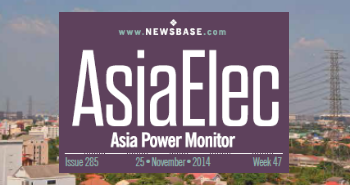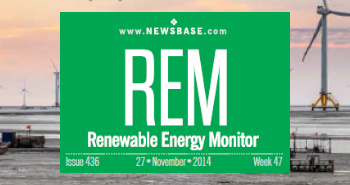Bangladesh’s rooftop solar ambitions face tight deadlines and systemic challenges

Bangladesh’s target of adding 3,000 megawatts (MW) of installed rooftop solar capacity by the end of December risks falling short due to a combination of technical, financial and institutional hurdles, according to a new report by IEEFA - the Institute for Energy Economics and Financial Analysis.
The briefing note, published on August 18, examines the government’s recently announced rooftop solar initiative, designed to accelerate renewable energy deployment at a time when the country is grappling with a persistent energy crisis. While the programme signals a strong policy commitment, IEEFA cautions that the deadline and scale of the target may be overly ambitious given the country’s limited progress so far.
Slow progress so far
Between June 2008 and June 2025, the South Asian country installed just 245 MW of rooftop solar capacity. To reach 3,000 MW in less than six months would require an increase in installation rates by more than 12 times the existing pace. IEEFA notes that such a rapid ramp-up has little precedent in the country’s energy sector and will demand extraordinary coordination, resources and capacity that may not currently exist.
One major constraint is the limited sanctioned load in the buildings identified for installations. Government offices, hospitals, educational institutions and religious facilities—the priority sites under the programme—have a combined demand of less than 1,500 MW. This makes it mathematically impossible to achieve 3,000MW of rooftop capacity in these facilities under the current net metering framework.
Capacity and institutional bottlenecks
Shafiqul Alam, IEEFA’s lead energy analyst for Bangladesh and the author of the note, highlights that even if the demand constraint could be overcome, the institutional timeline is unrealistic. He points to the processes of project funding, tendering, bid evaluation, issuance of work orders and on-the-ground implementation, all of which typically take several months each. Without streamlining, an extension of the December 2025 deadline appears inevitable.
Another significant bottleneck is the availability of skilled companies to deliver projects at scale. Bangladesh currently has only 15–20 established Engineering, Procurement and Construction (EPC) firms with the technical expertise to handle rooftop solar. According to IEEFA, these firms may not collectively have the capacity to deploy 3,000 MW in less than six months, particularly if installations are dispersed across numerous sites.
Capex vs opex: mixed models and risks
The government has opted for a mixed approach, with government offices expected to adopt the CAPEX model—using public funds for installations—while hospitals and educational institutions will operate under the OPEX model, which involves no upfront costs for the institutions.
IEEFA notes that each model has advantages but also critical weaknesses. The CAPEX model can deliver faster deployment and higher long-term savings, but is vulnerable to rushed developer selection, poor maintenance, and weak coordination between agencies. In contrast, the OPEX model ensures better quality control but provides smaller savings, faces financing constraints, and may not attract companies to invest in small, scattered projects, especially in rural areas affected by load-shedding.
Technical risks such as soiling, which can significantly reduce annual solar output, also remain under-addressed. IEEFA recommends that public offices establish funds from monthly energy savings under CAPEX projects to finance long-term maintenance contracts with service providers. At the same time, utilities should work on mitigating the impact of rural load-shedding to make OPEX projects viable.
Learning from regional experience
The report urges Bangladesh to learn from neighbouring countries with more advanced renewable energy penetration. Pakistan, for example, has leveraged its energy shortages and high tariffs to rapidly scale up rooftop solar adoption. In Sri Lanka, the government addressed financing bottlenecks by partnering with multilateral agencies, before funding rooftop installations on public buildings. India, with over 18,000 MW of rooftop solar capacity by May 2025, has shown how consistent policy and regulatory backing can deliver large-scale results.
By comparison, Bangladesh’s renewable energy sector remains in its infancy, contributing a small fraction to the national grid. Rooftop solar is considered a “low-hanging fruit” that could support the government’s target of 30% renewable energy in the power mix by 2040, but realising this potential requires addressing fundamental gaps in policy execution, institutional readiness and market capacity.
Urgent need for capacity building
IEEFA stresses that Bangladesh must prioritise capacity development across its key institutions. Building technical expertise within government agencies, creating specialised training programmes for the private sector, and investing in monitoring systems are essential steps to ensure projects operate smoothly and securely over the long term. The establishment of an independent monitoring mechanism is also recommended to provide oversight and accountability.
The report also notes a cultural and structural challenge: the perception of cybersecurity, financing and maintenance expenses as additional costs rather than essential investments. Without changing this mindset, rooftop solar projects could suffer from poor upkeep and eventual underperformance.
Balancing ambition with reality
While the 3,000 MW rooftop solar programme has been welcomed as a bold step, experts caution that unrealistic timelines could undermine its credibility. For Bangladesh, which is highly dependent on fossil fuel imports and vulnerable to global price shocks, diversifying into renewable energy is a strategic necessity. However, unless the government tempers ambition with realistic planning, the programme risks becoming another missed opportunity.
IEEFA concludes that Bangladesh’s rooftop solar strategy has the potential to transform its renewable energy sector, but only if accompanied by structural reforms, adequate financing, capacity development and a phased, practical roadmap. Without these, the 3,000 MW target by December 2025 may remain out of reach.



Follow us online